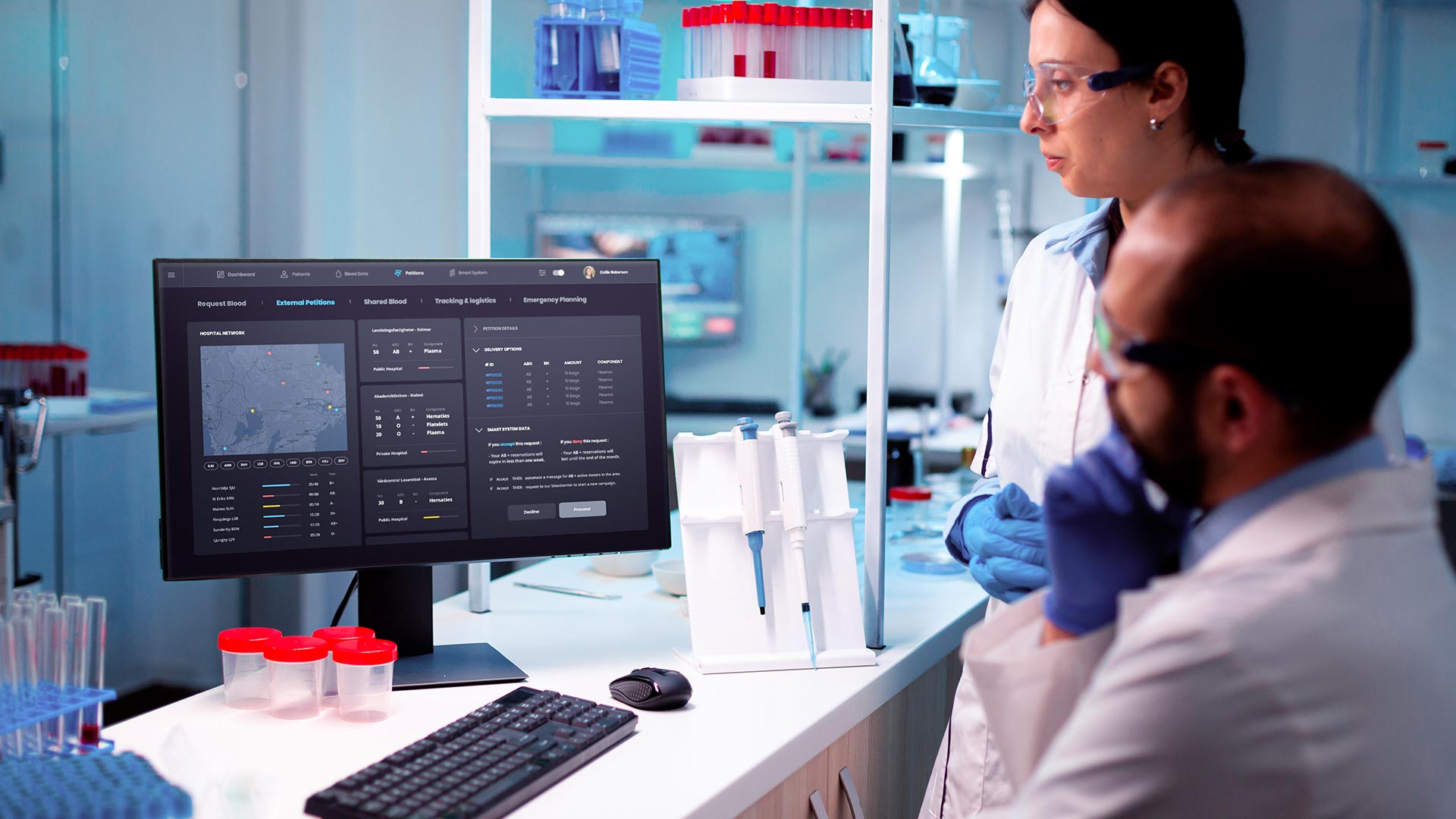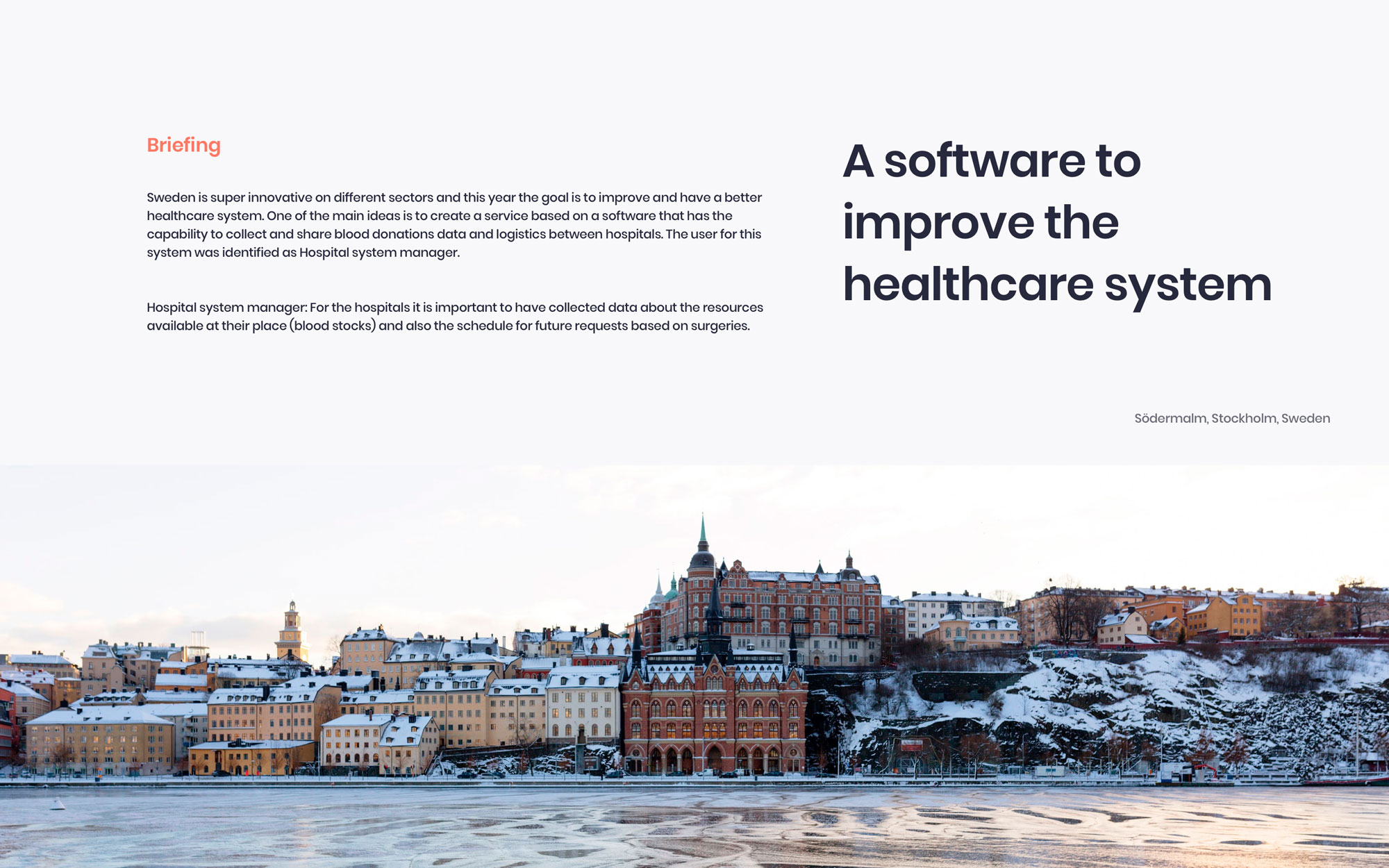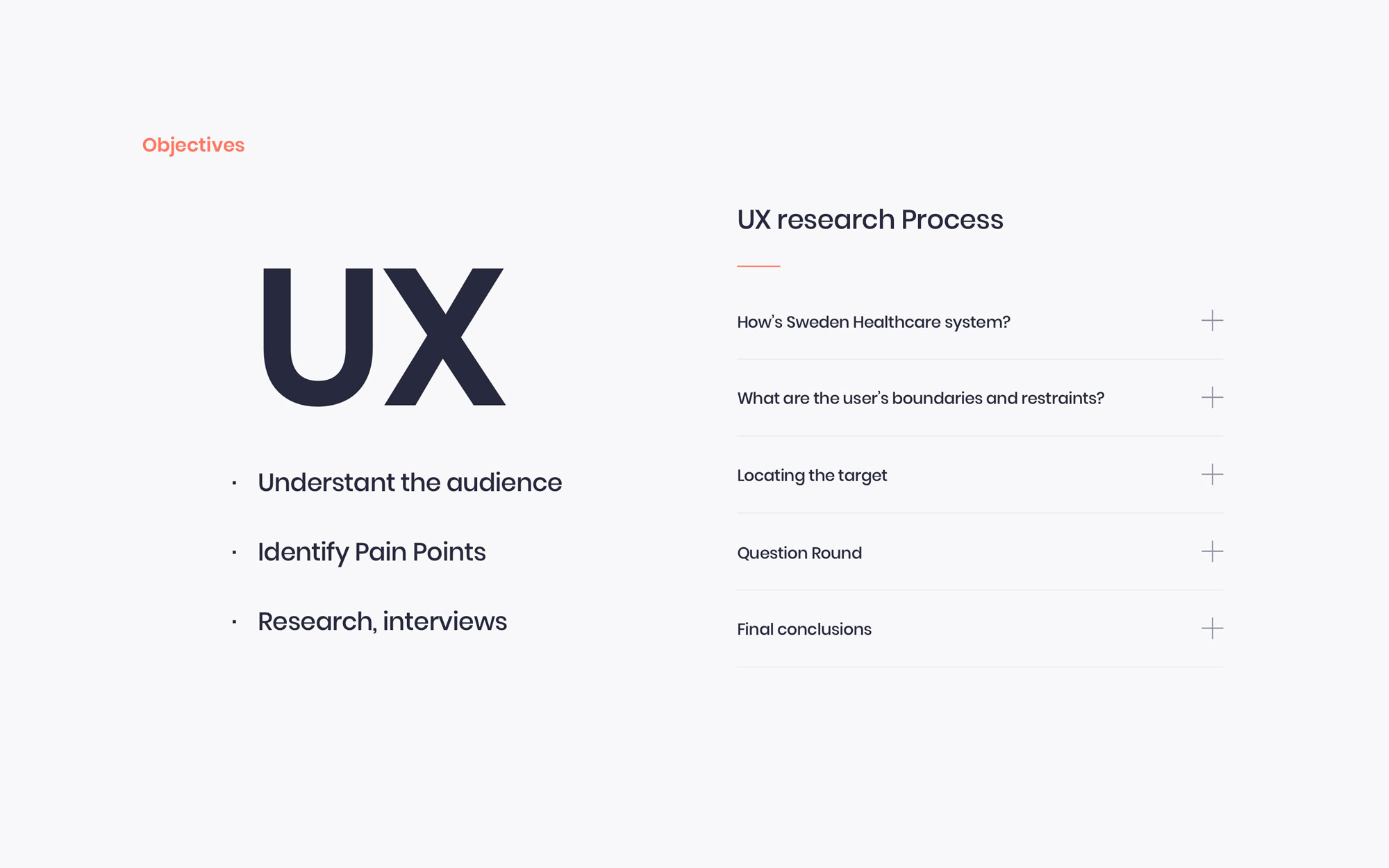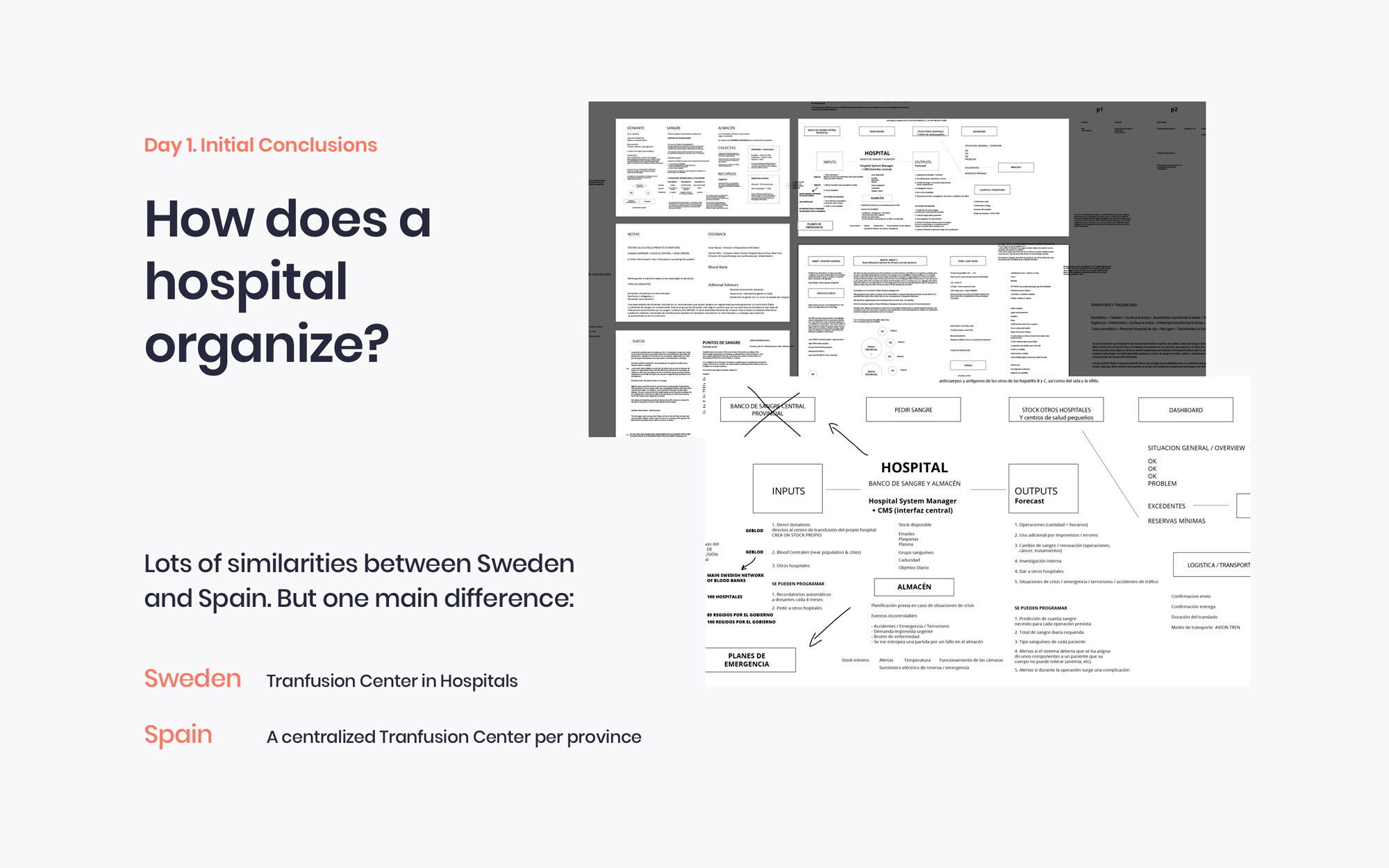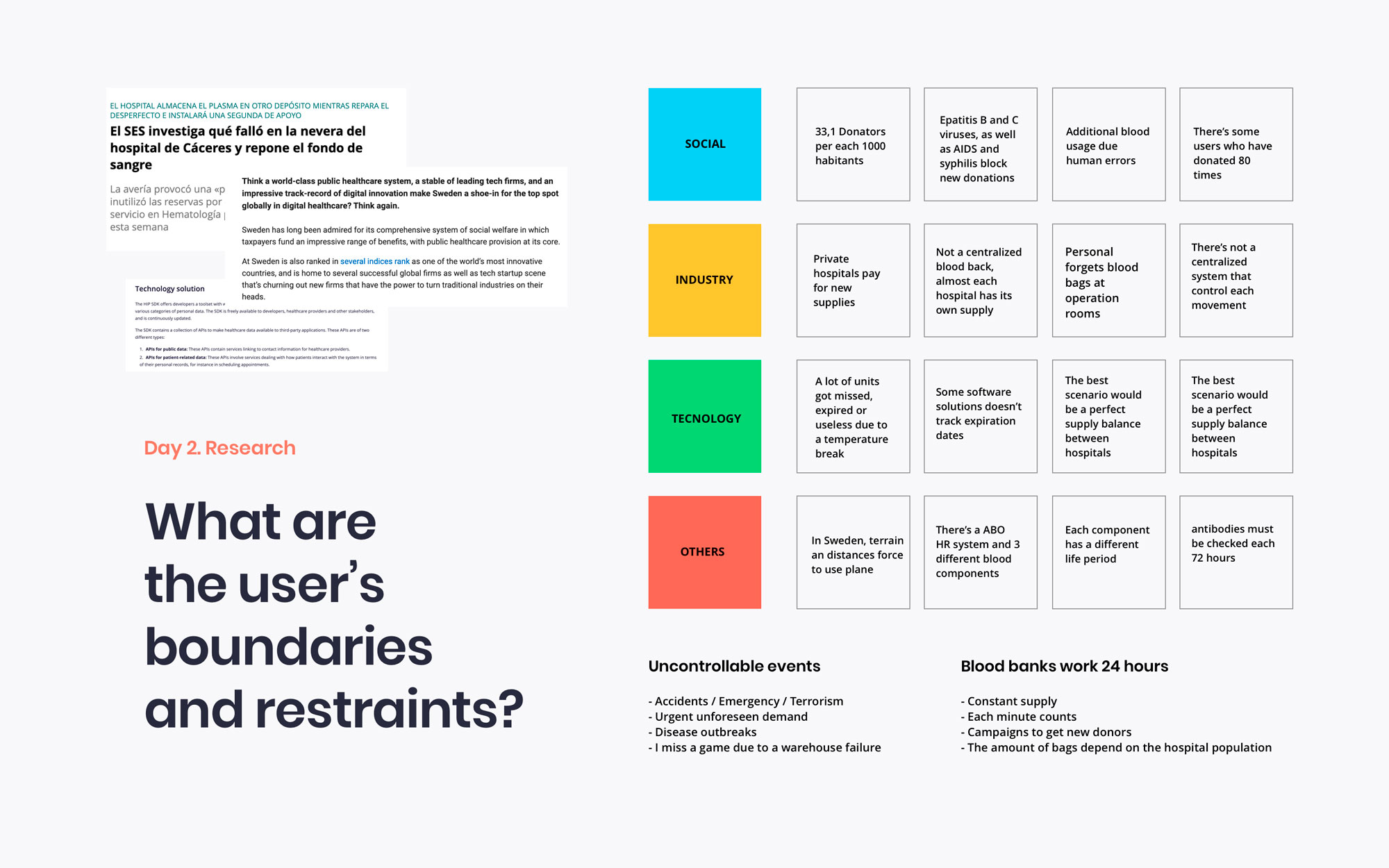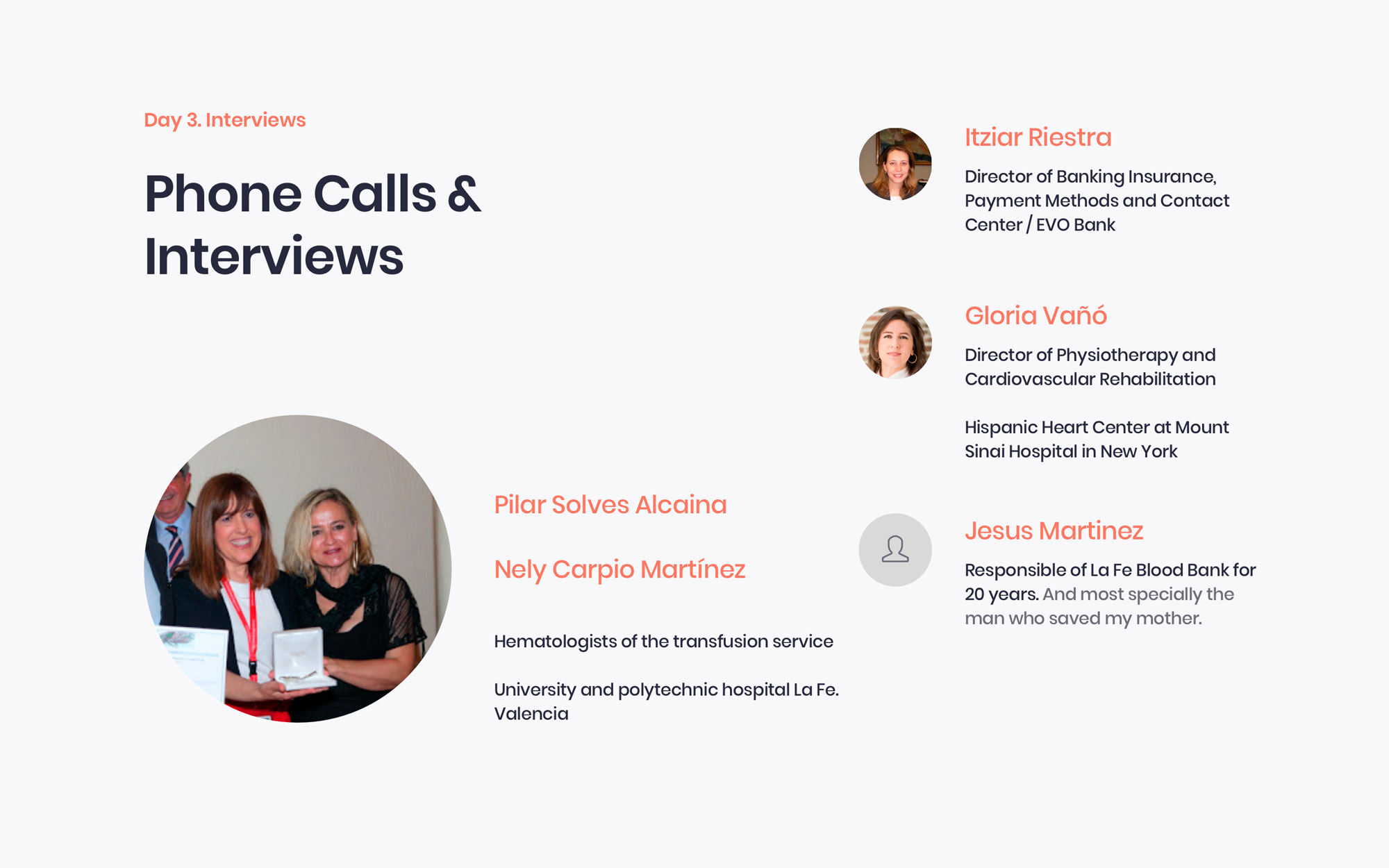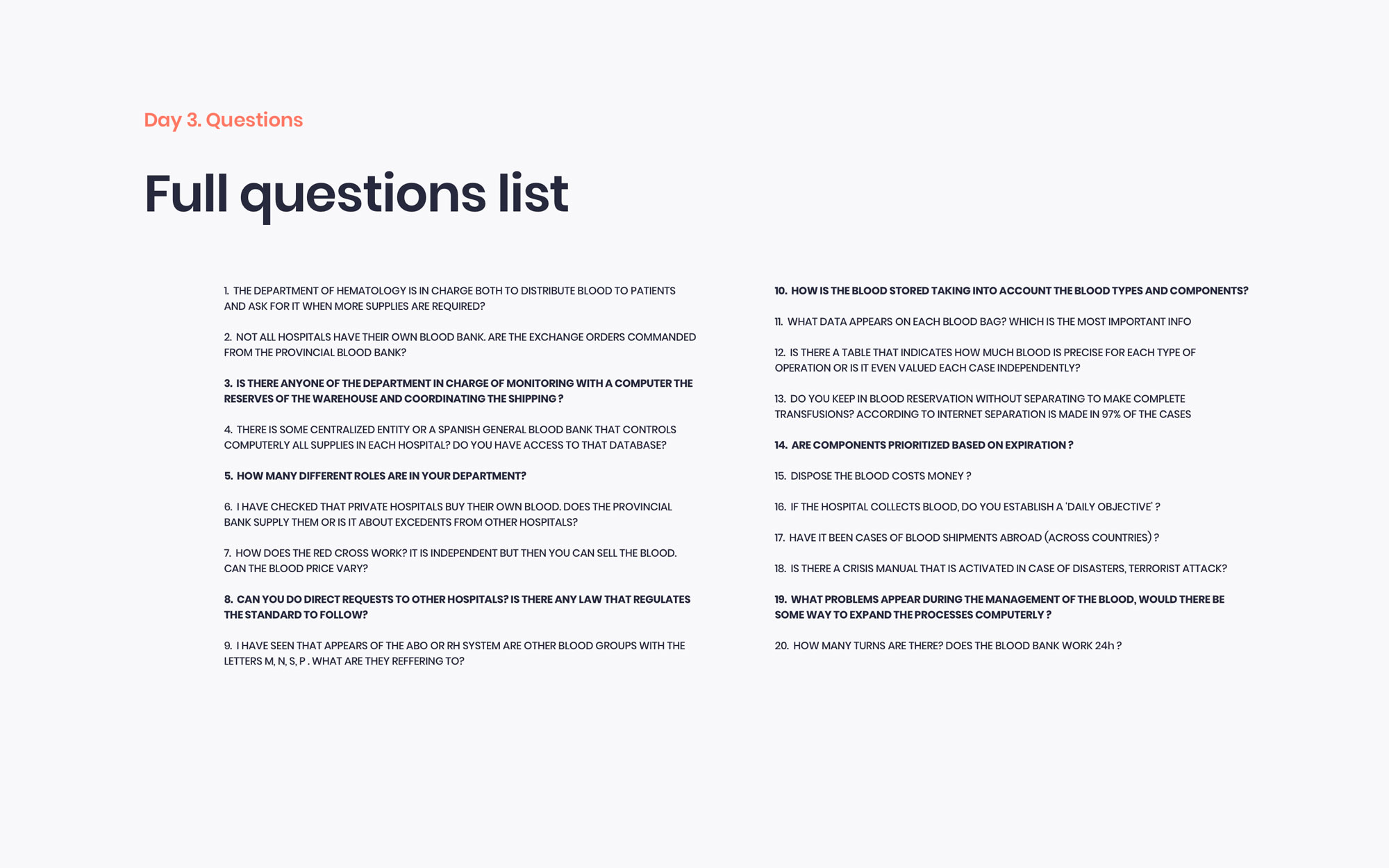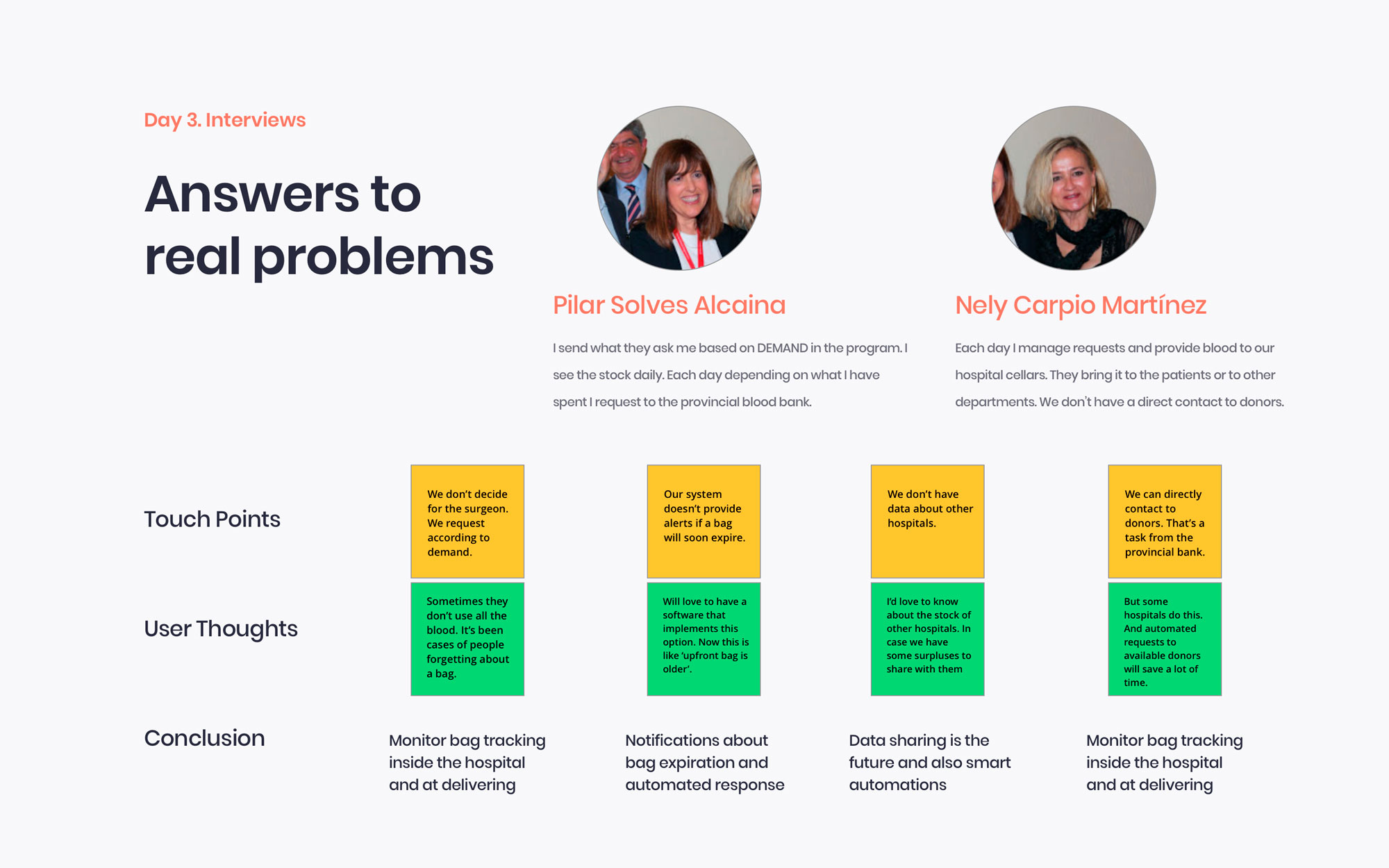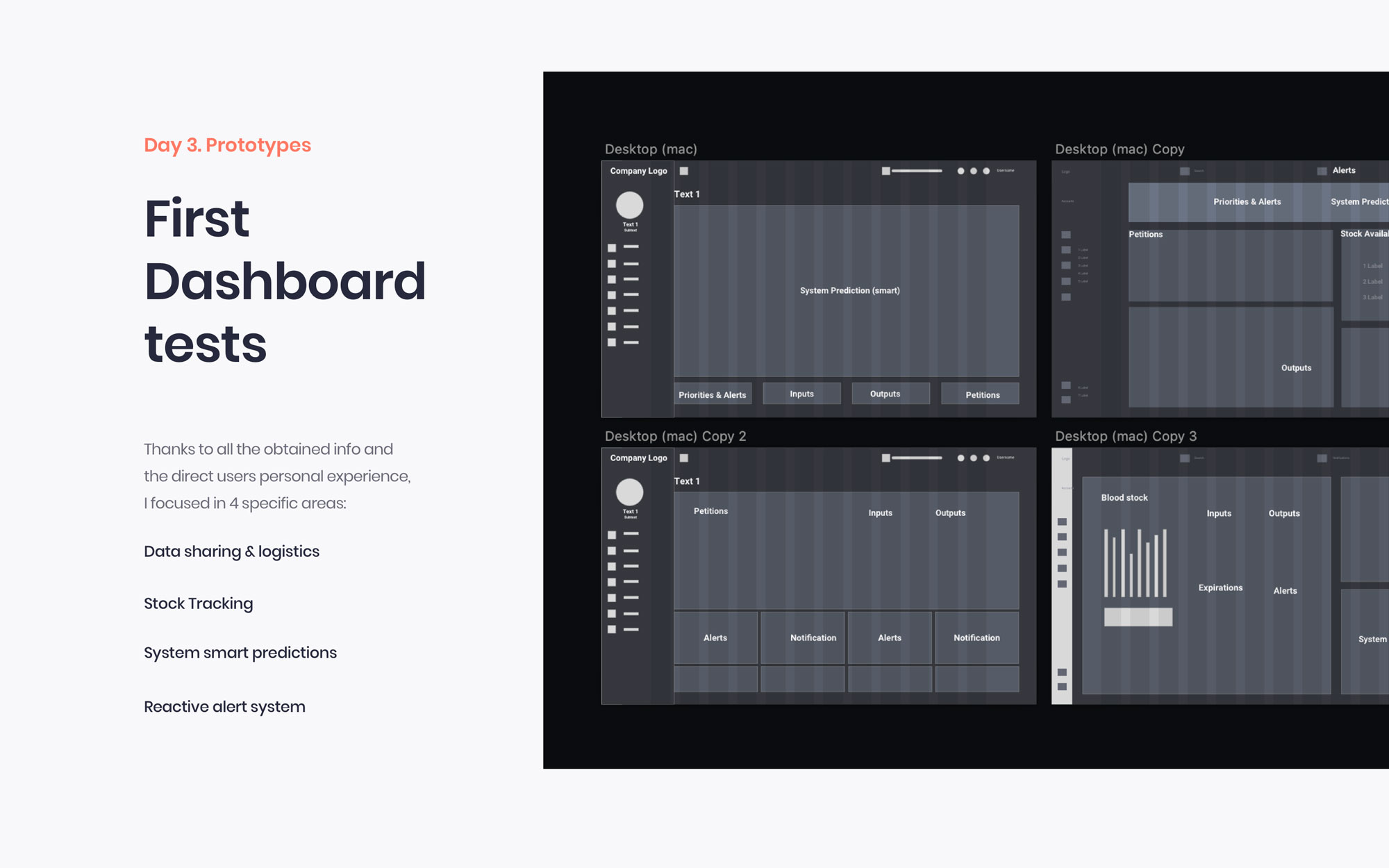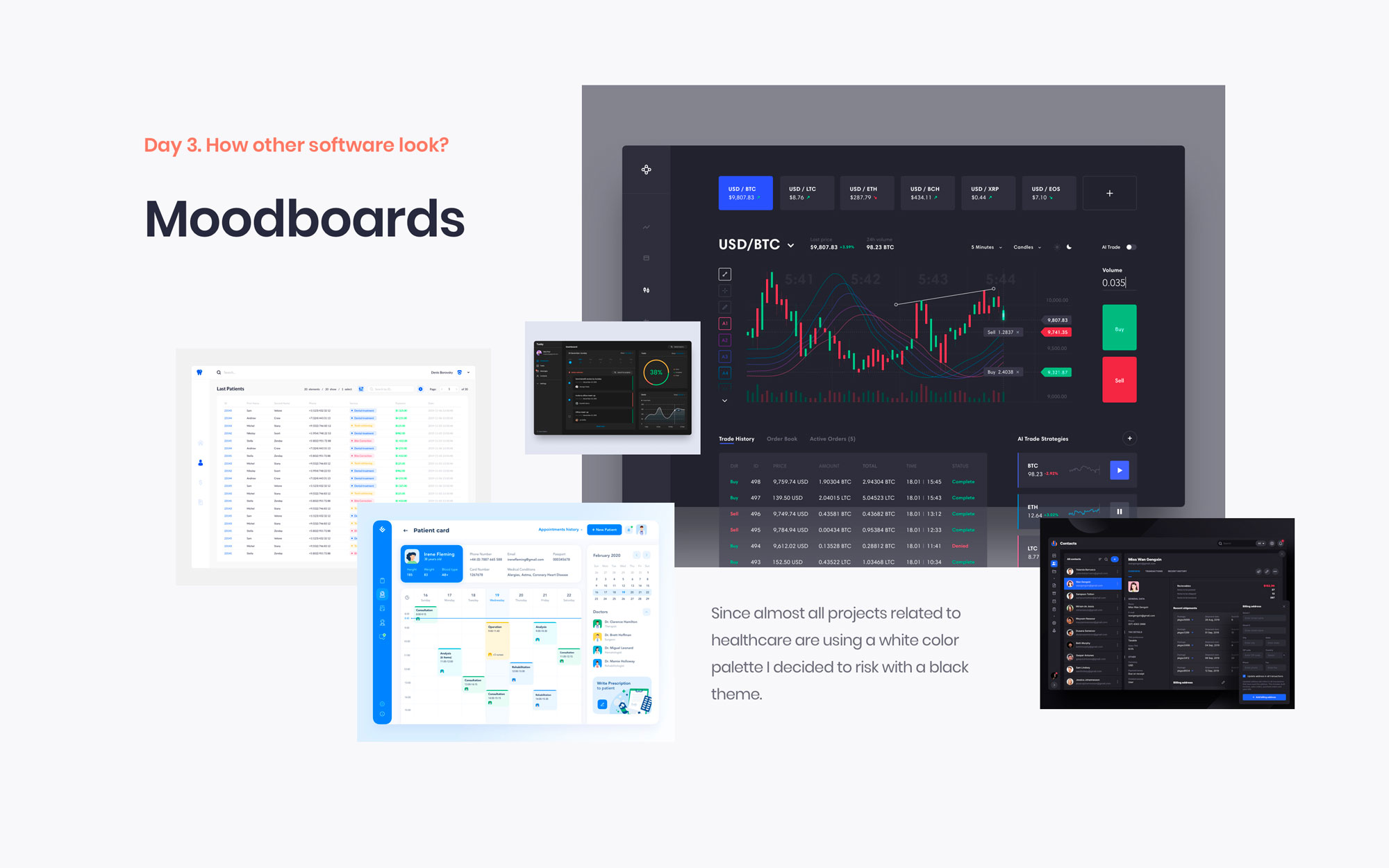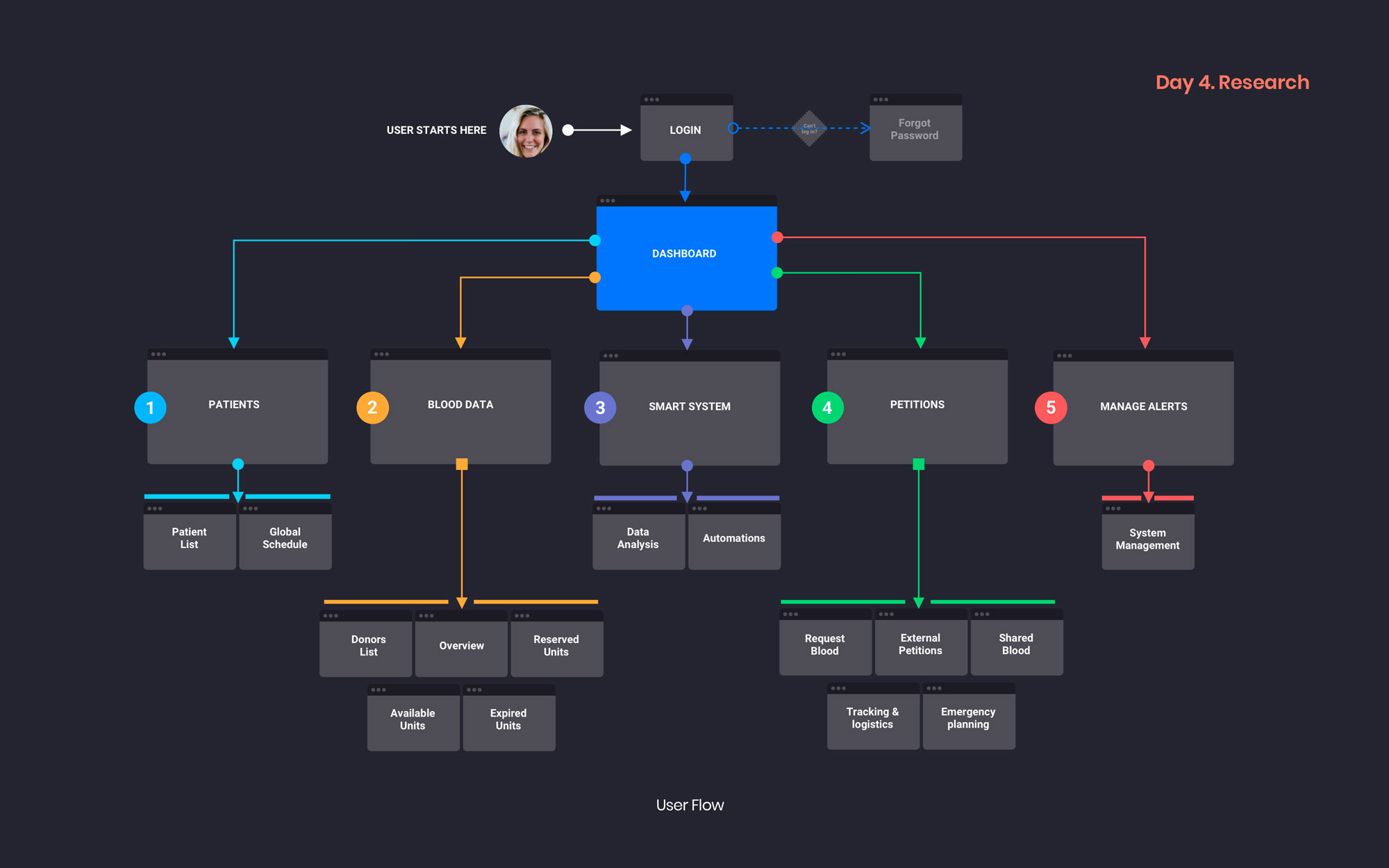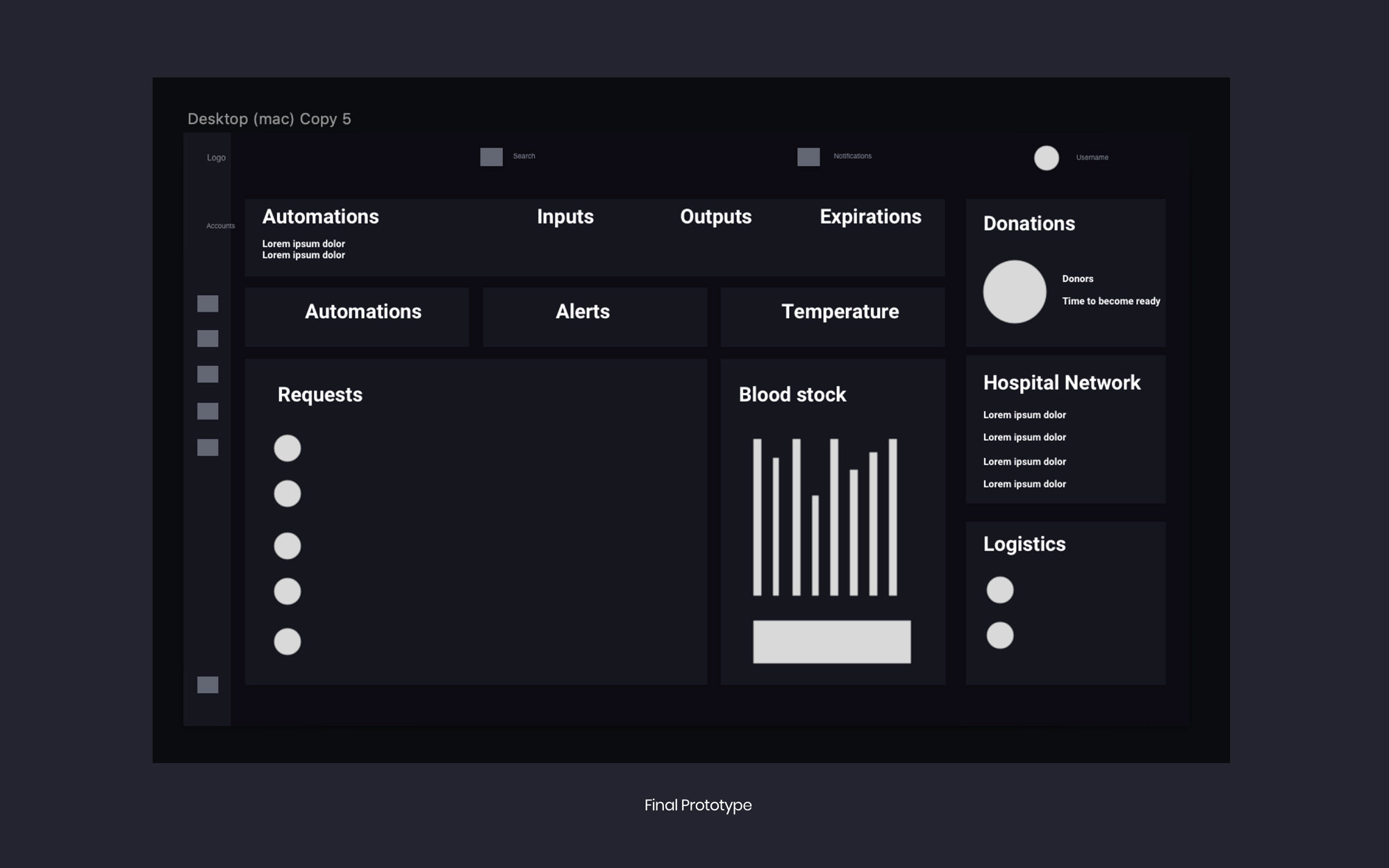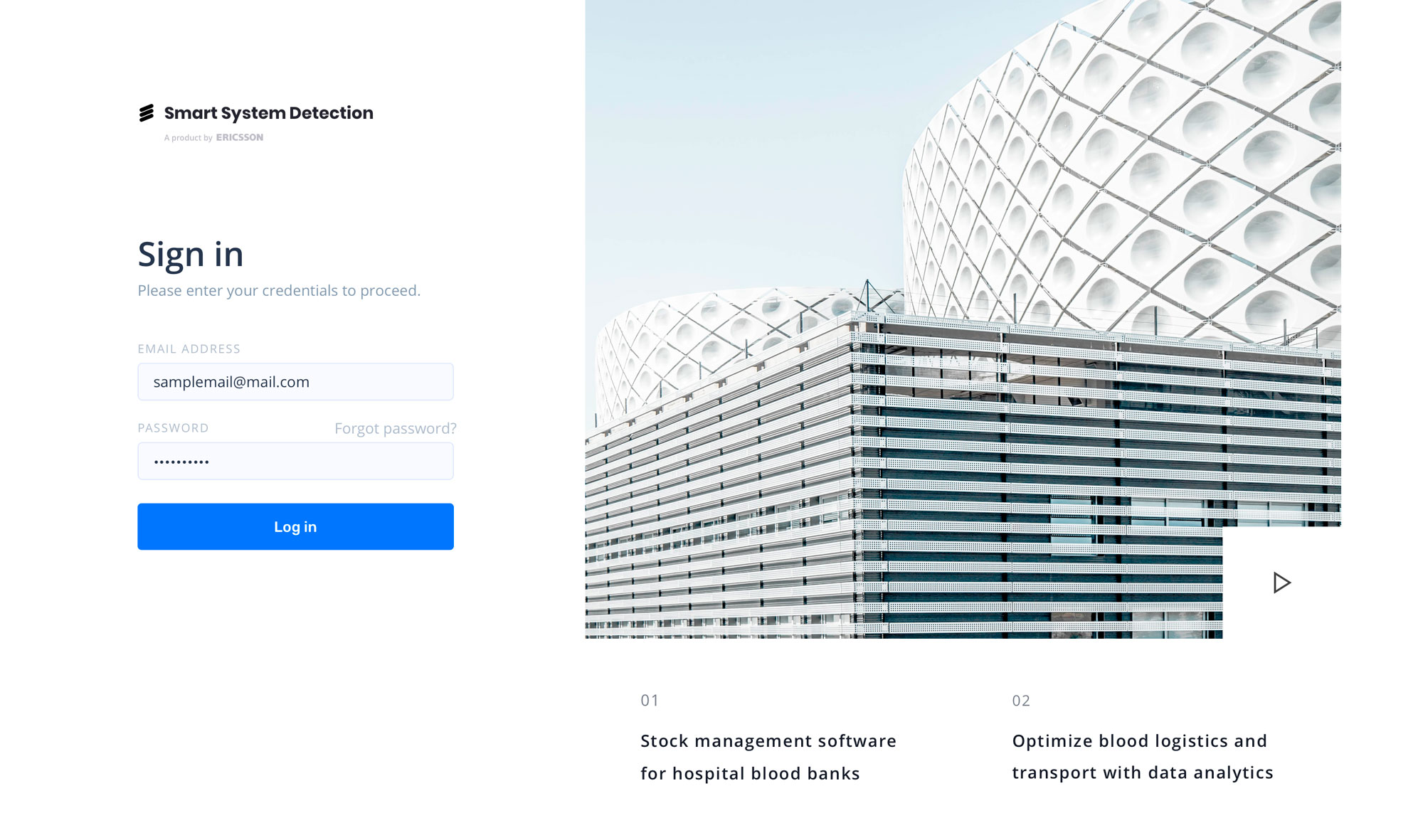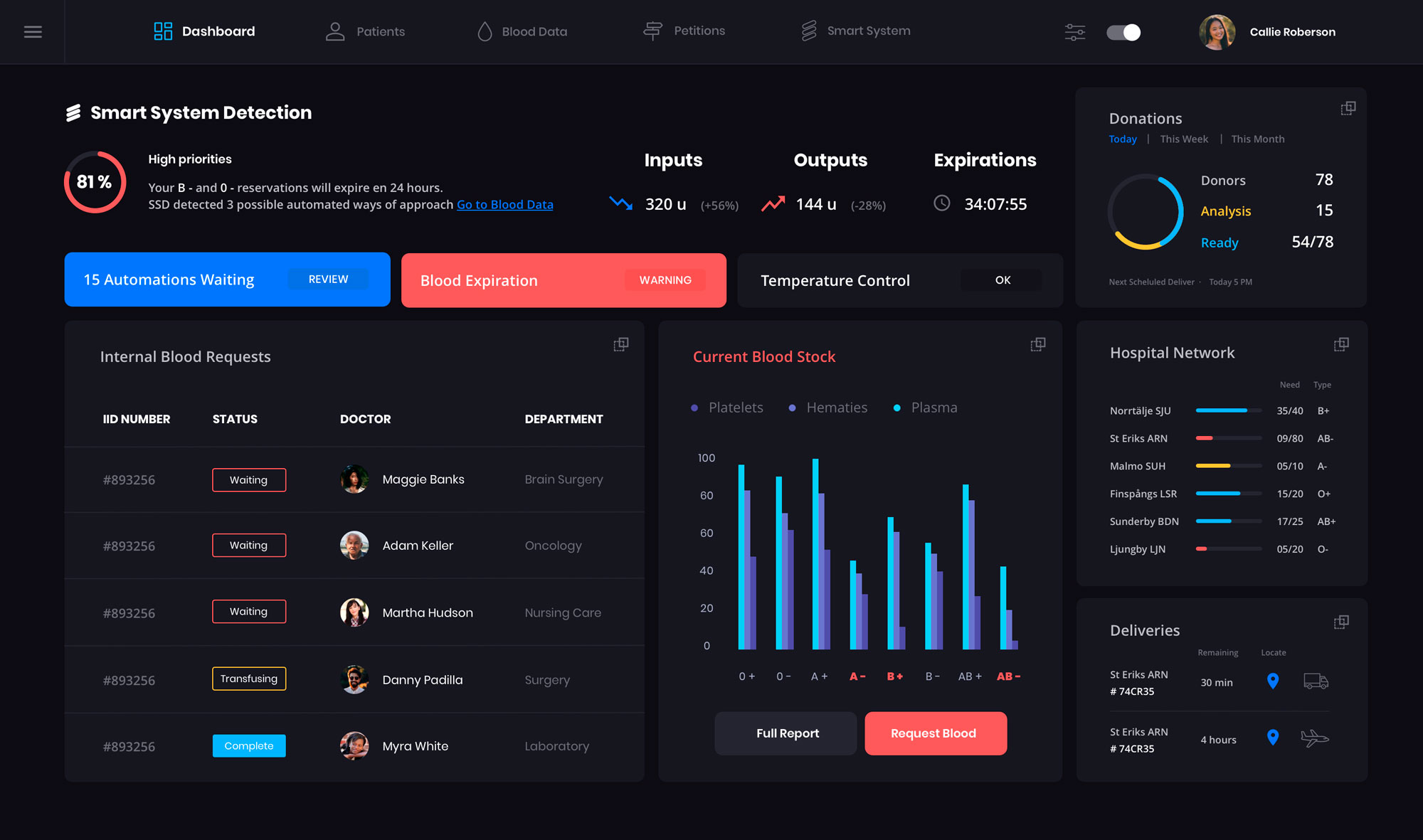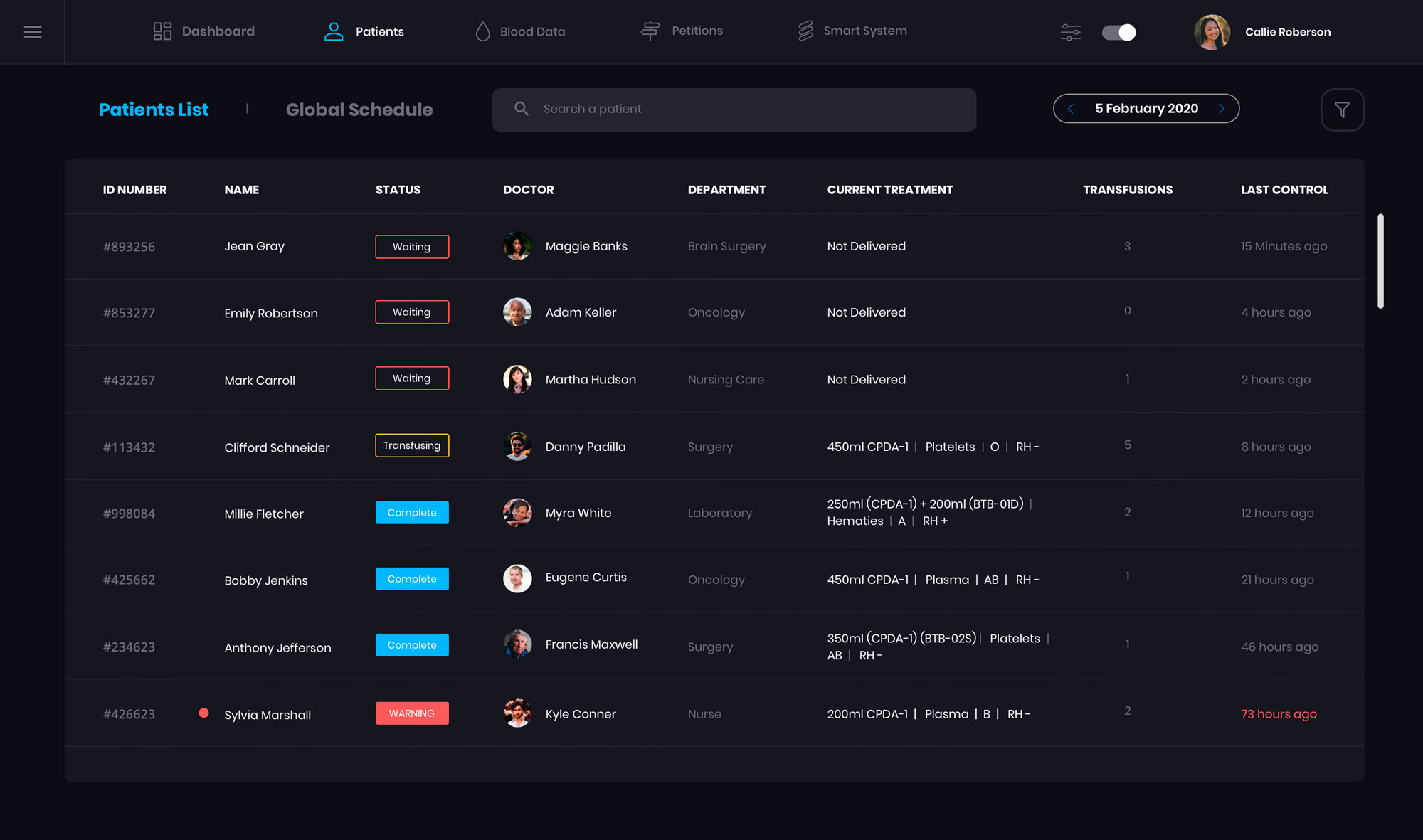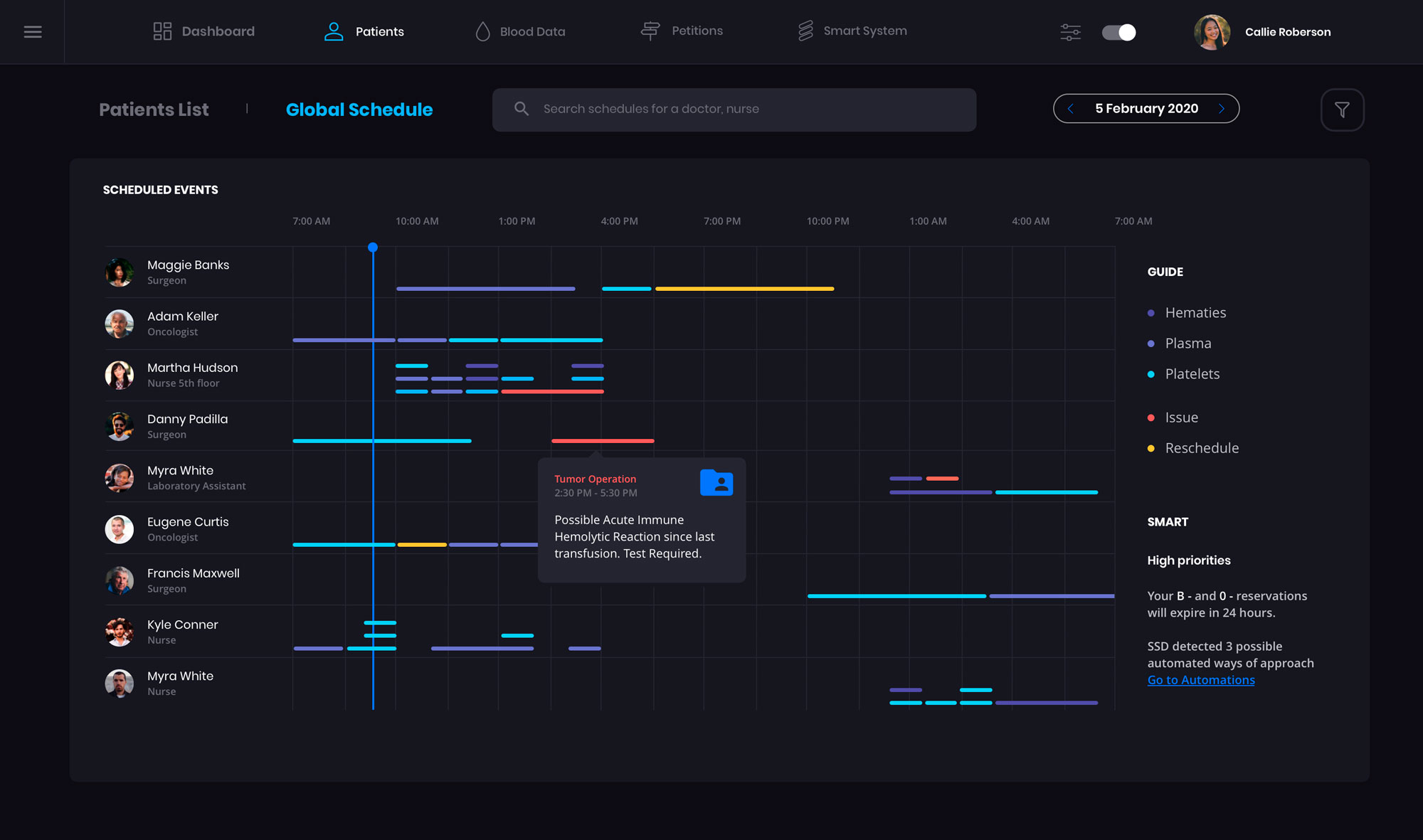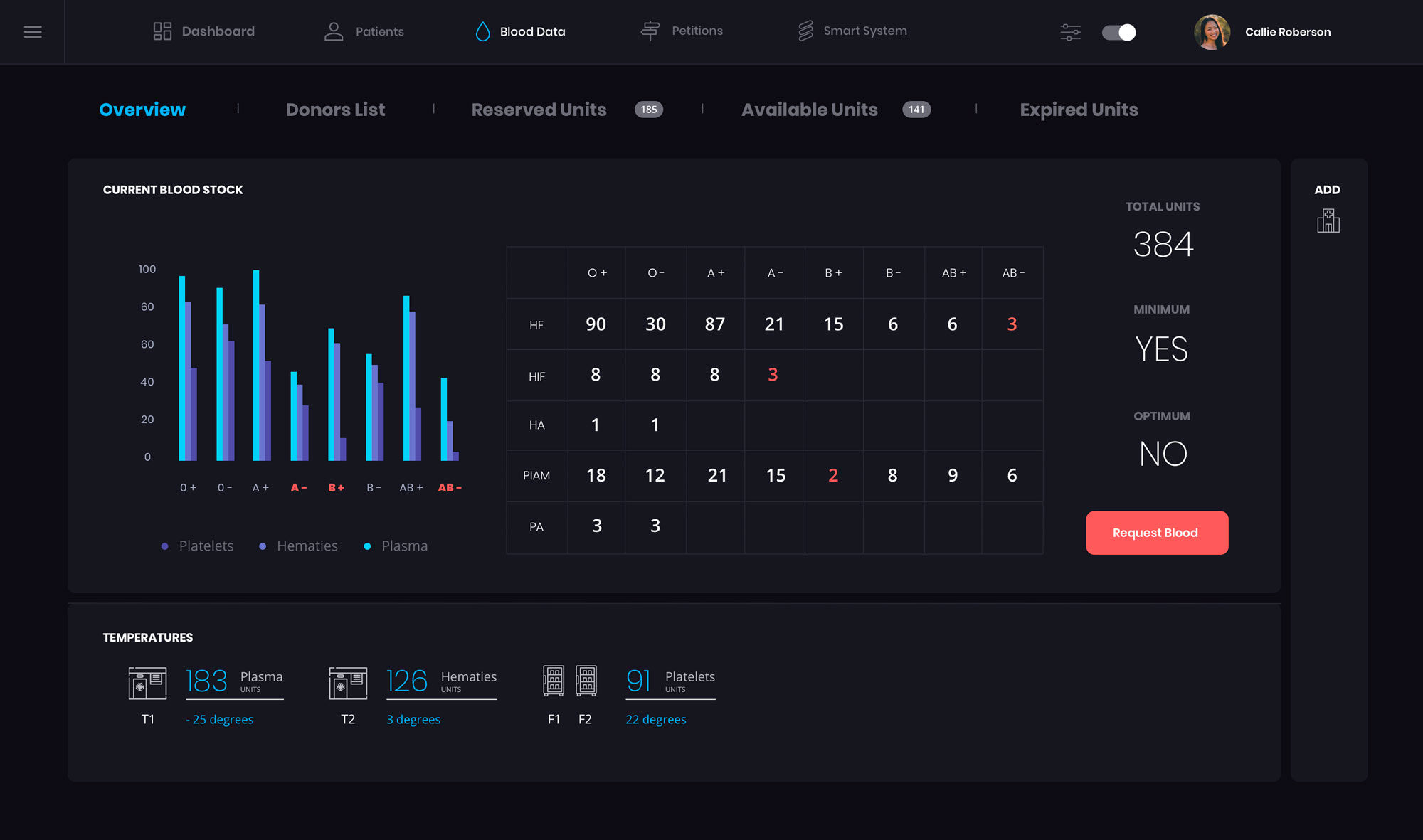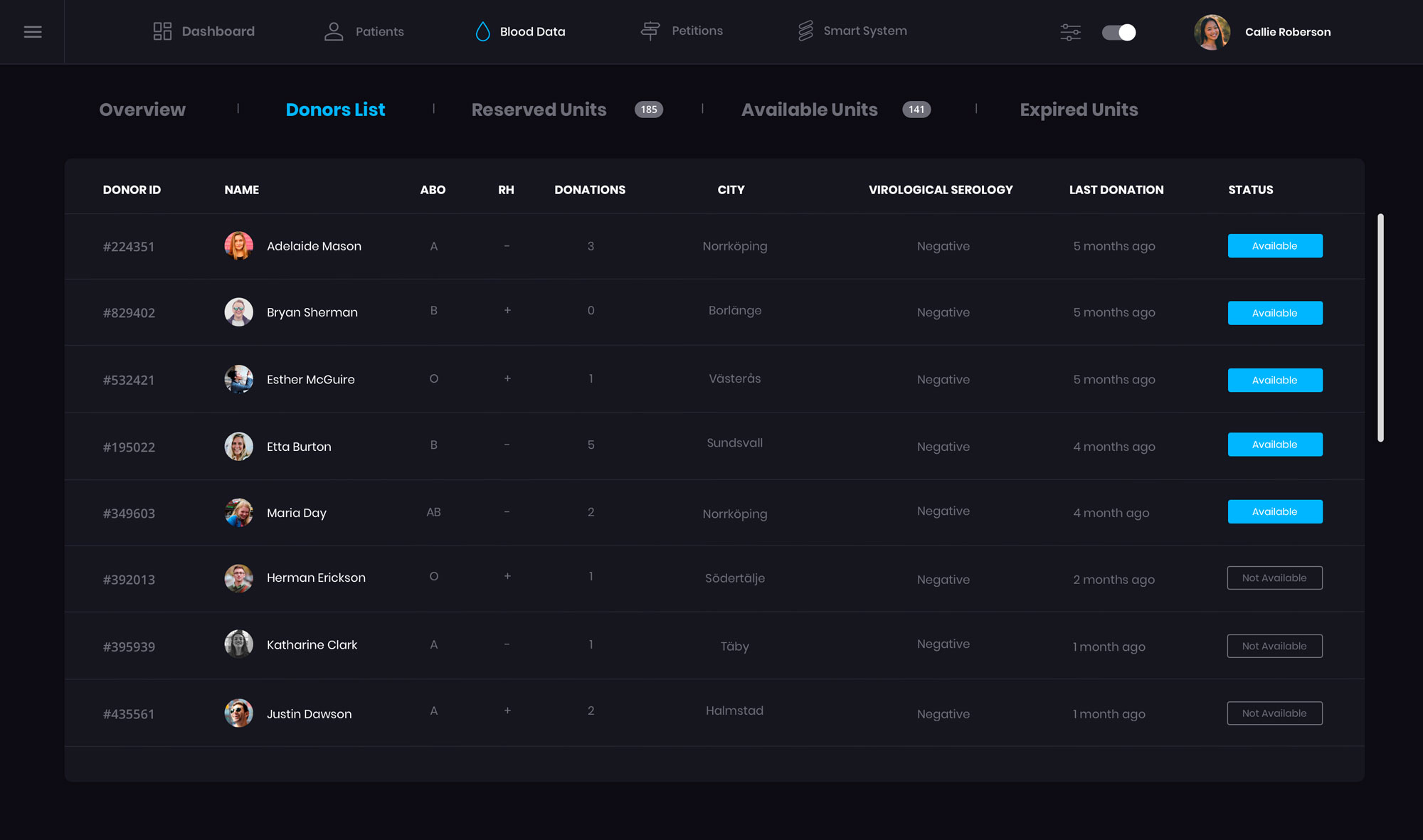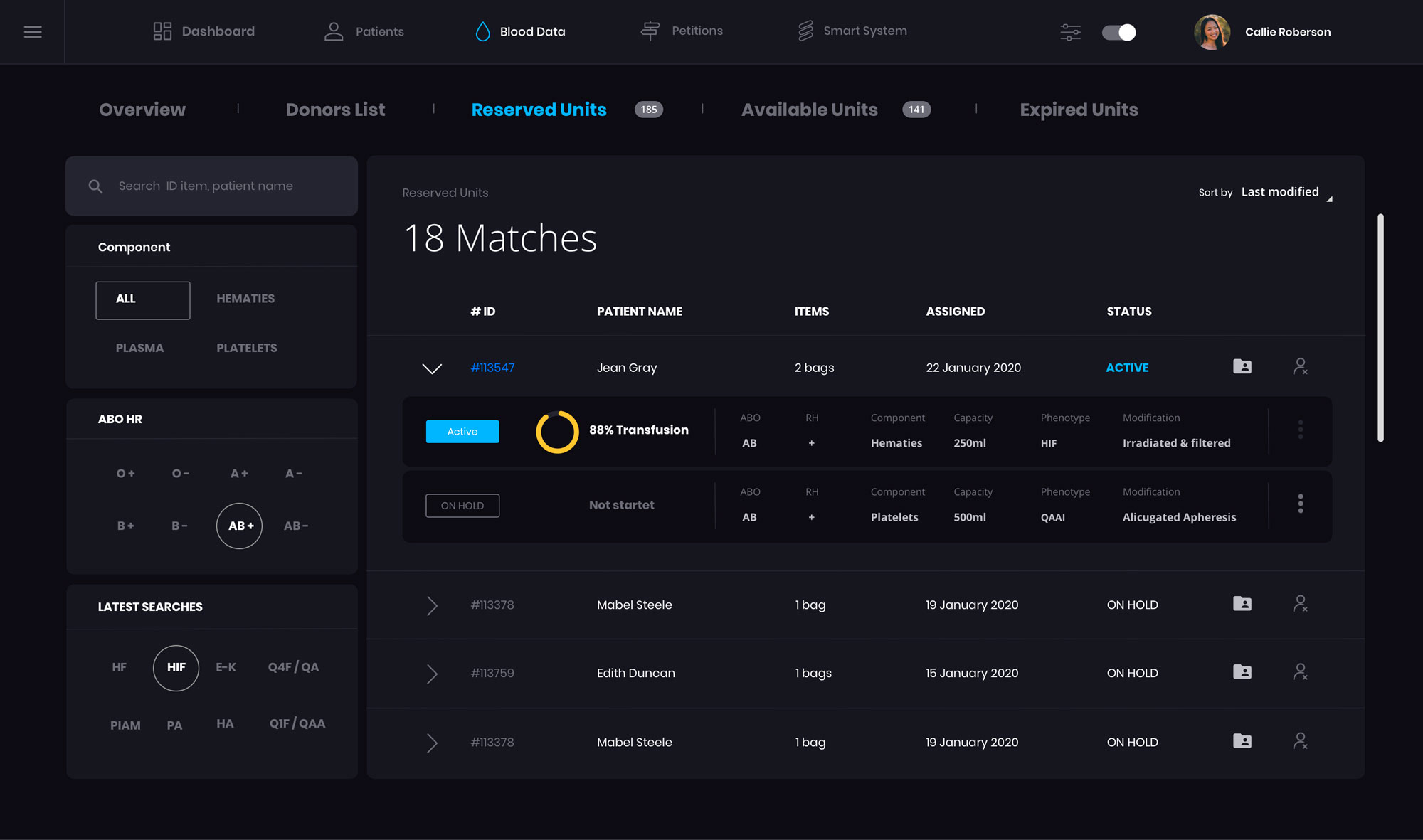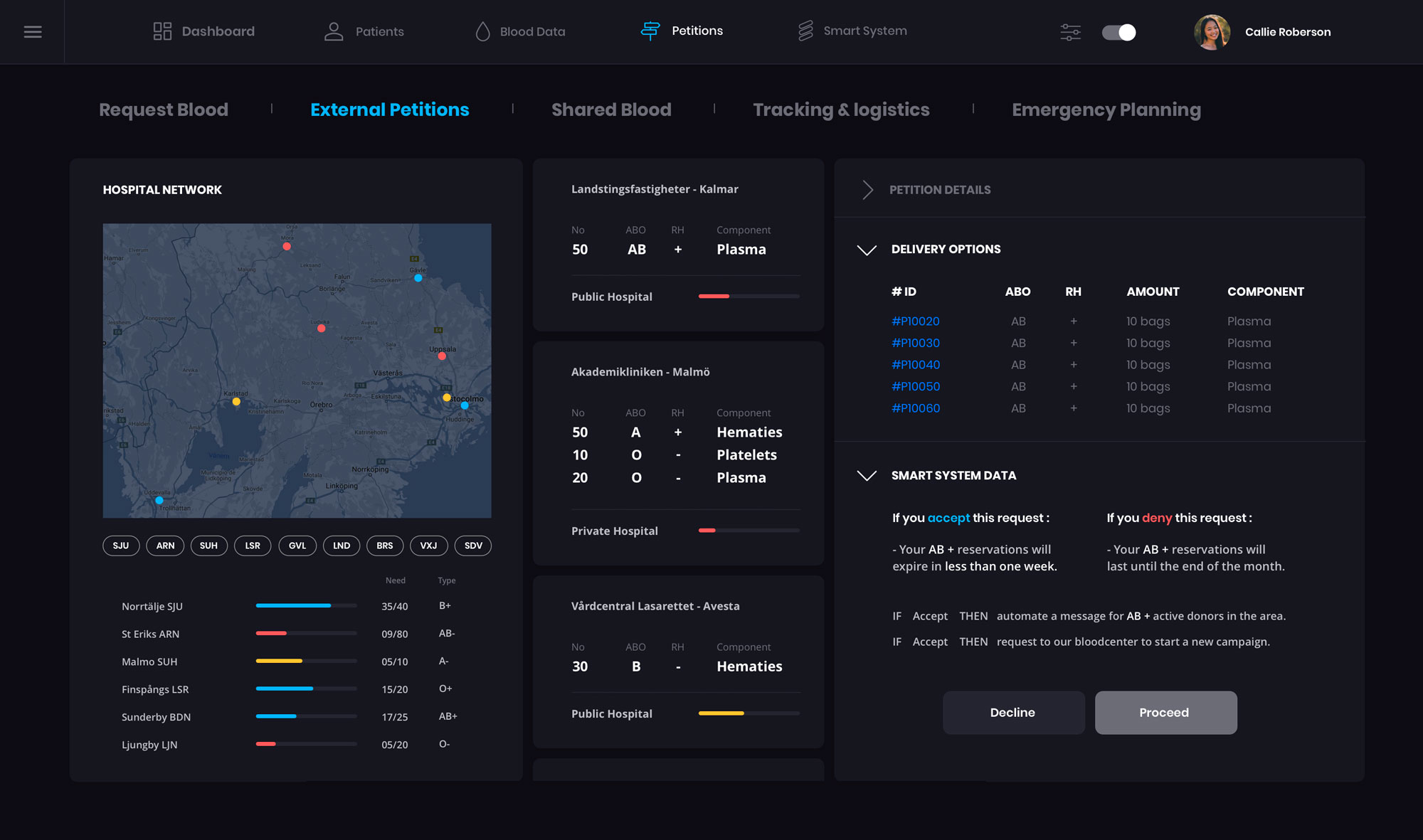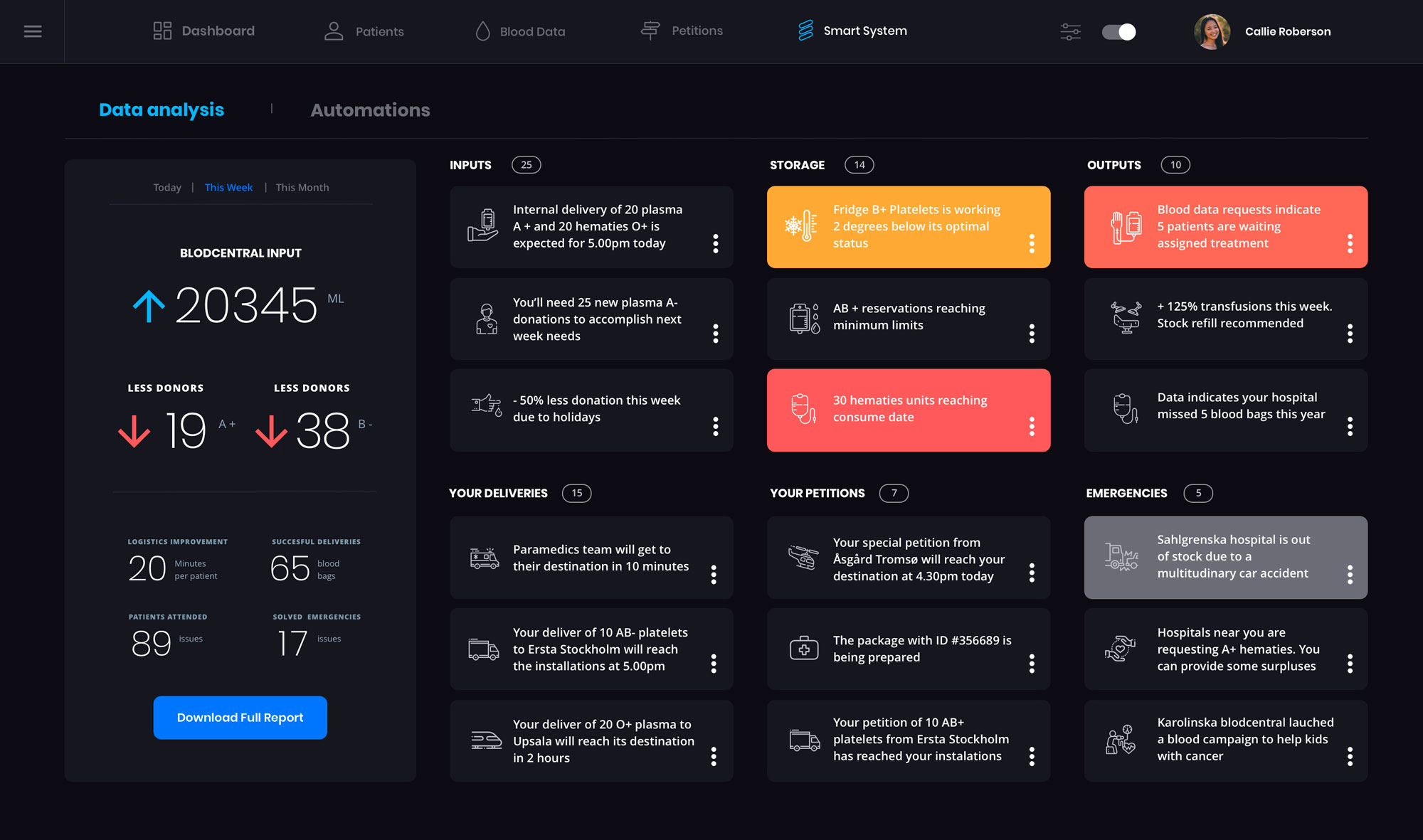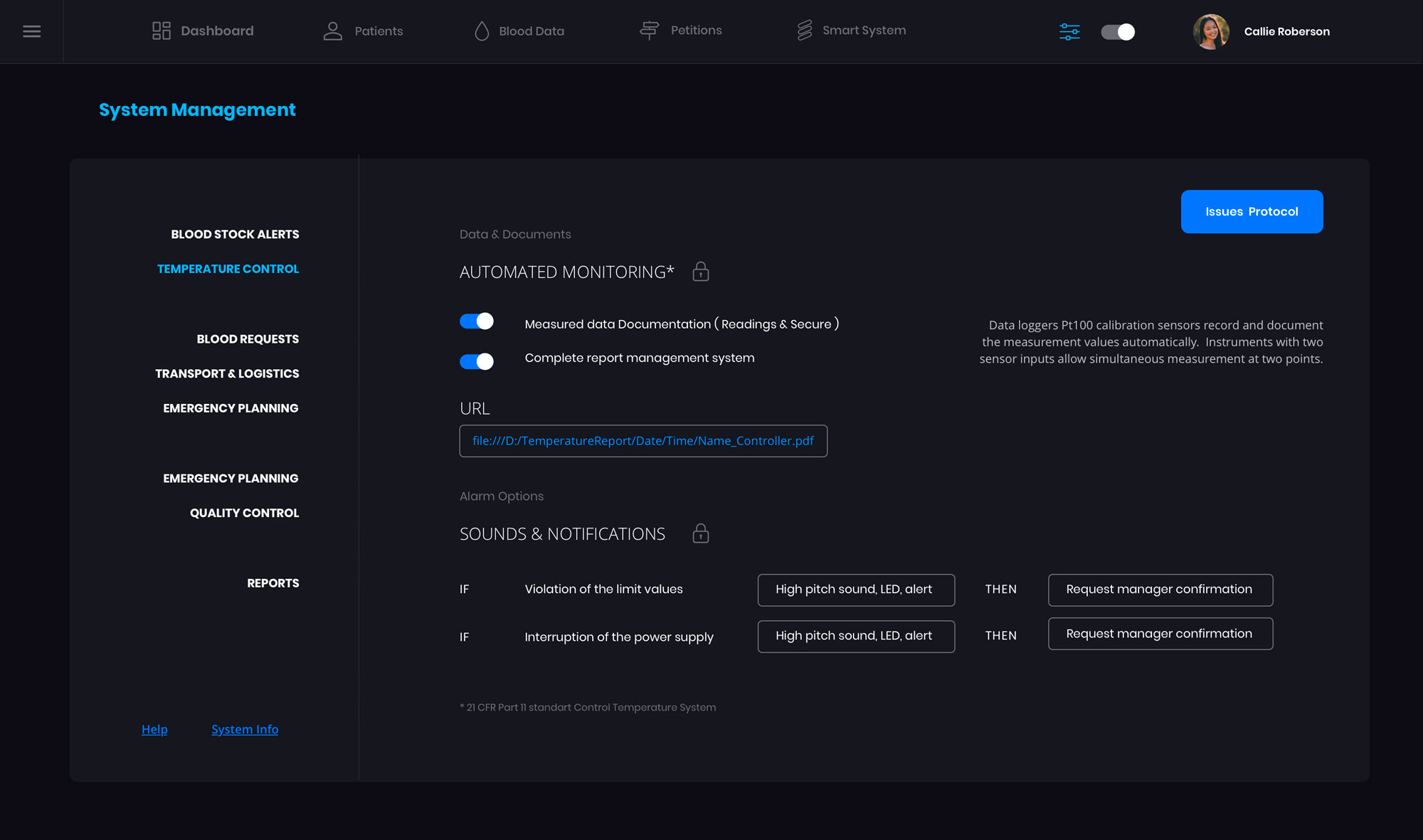Briefing
UX research
For the first 3 days of challenge, I look for as much info I could find online about how blood management & storage works, plus learned about the organization reality of the Swedish Public Medical System. At the same time I looked for news and articles about the most common issues and problems that blood banks face in a daily basis. While doing this I elaborated a first round of possible questions to ask to the users.
About user identification, some years ago a close family member of mine was diagnosed with a really dangerous disease and needed to be treated with blood transfusions. Due to this, I was able to do some phone calls until identifying 2 women who were working in the largest blood bank in Valencia (Spain).
Below you can see images of all my findings, questions asked and initial conclusions to detect opportunities.
User flow & LowFi design
The hospital system manager demands a complete solution that provides data insights from multiple hospitals. The tools must allow all responsibles to share blood inventory information, donors activity, patients needs and scheduled surgeries. At the same time the system shall be designed to automate recurrent tasks and trigger a predictions list. Then by using the data, the managers will be able to synchronize, plan and execute orders so then all blood inventories are optimized. The system must the also be ready for emergency planning in case of multitudinous accidents or weather catastrophes.
After creating the flow, I arranged an initial layout option, focusing on fast and efficient navigation. Keep scrolling to see the final HiFi UI result.
Data, UI and AI combined
After combining research and user findings, I created in Sketch the final UI design of the whole interface. The interface has as a core objective to be intuitive, easy-to-use, fast and welcoming. Our system managers will spend many hours in front of the screen and their decisions will impact the possibilities of the patients to live. This will be specially important in unscheduled emergencies, power shortages and crisis.
The interface is not only able to track available blood units, but also expired ones and already reserved amounts.
The Smart System AI will be able combine data to balance and optimize all hospital inventories and trigger alerts. The system should be also connected locally to the blood bank refrigerators to monitor temperature and determine when the chambers must be replaced. This is specially important since each component (hematies, platelets and plasma) have specific temperature requirements.
One last improvement I did was to include plane and train deliveries since I learned that the geography of Sweden makes these transport options more efficient in case of emergencies.
